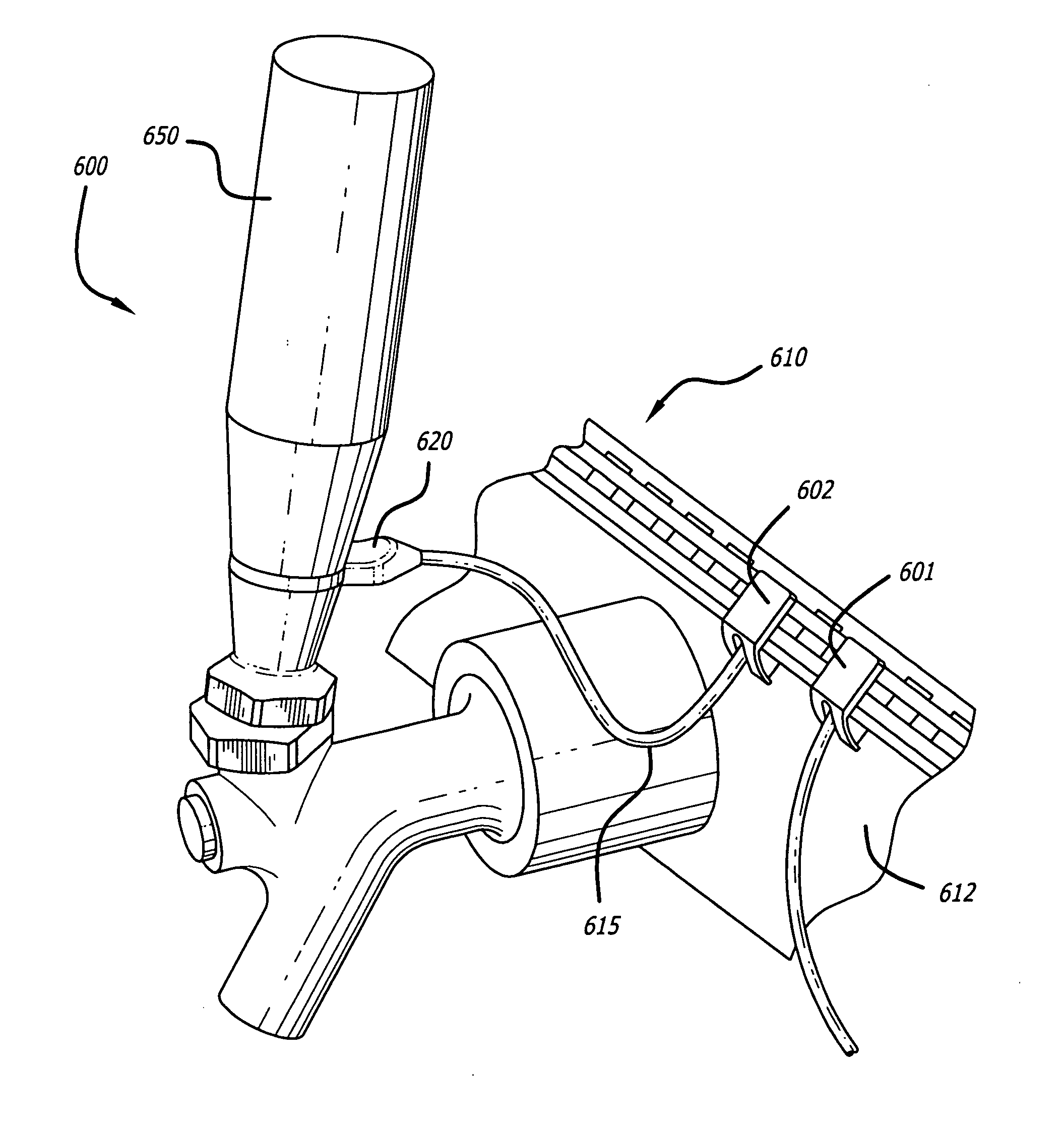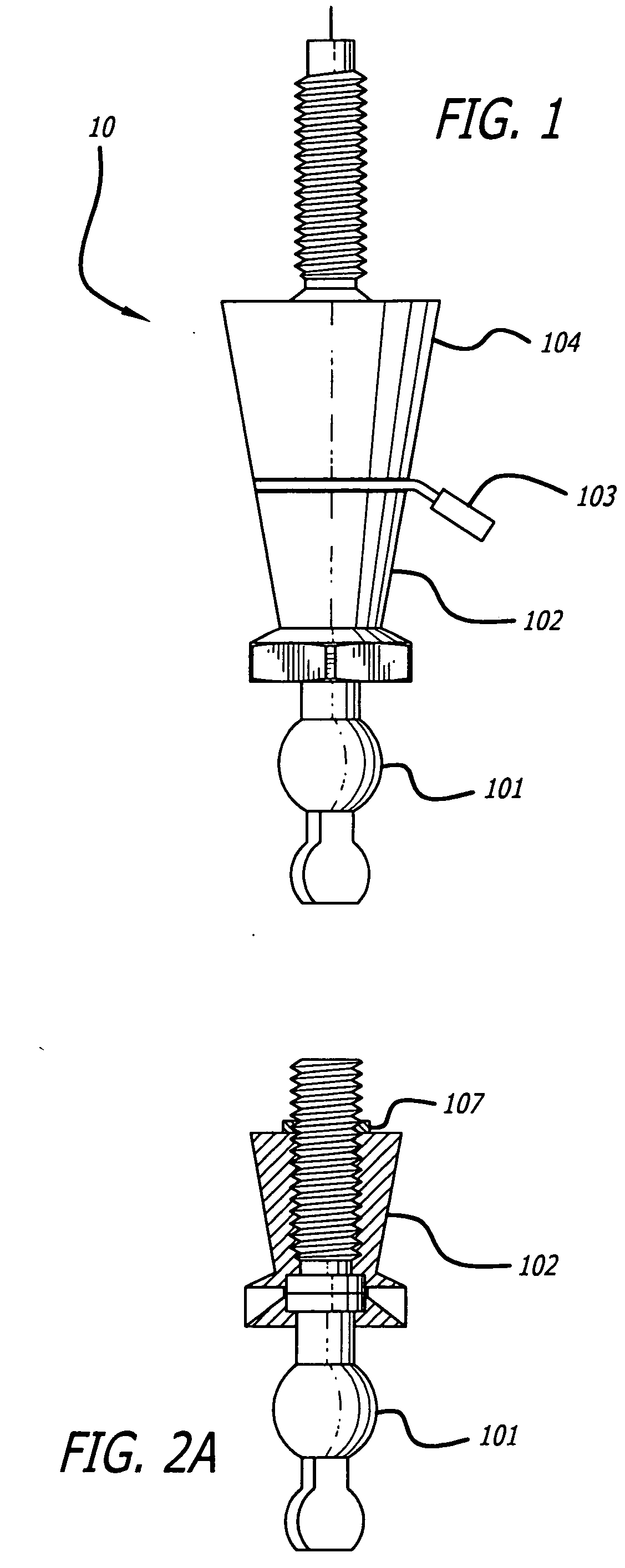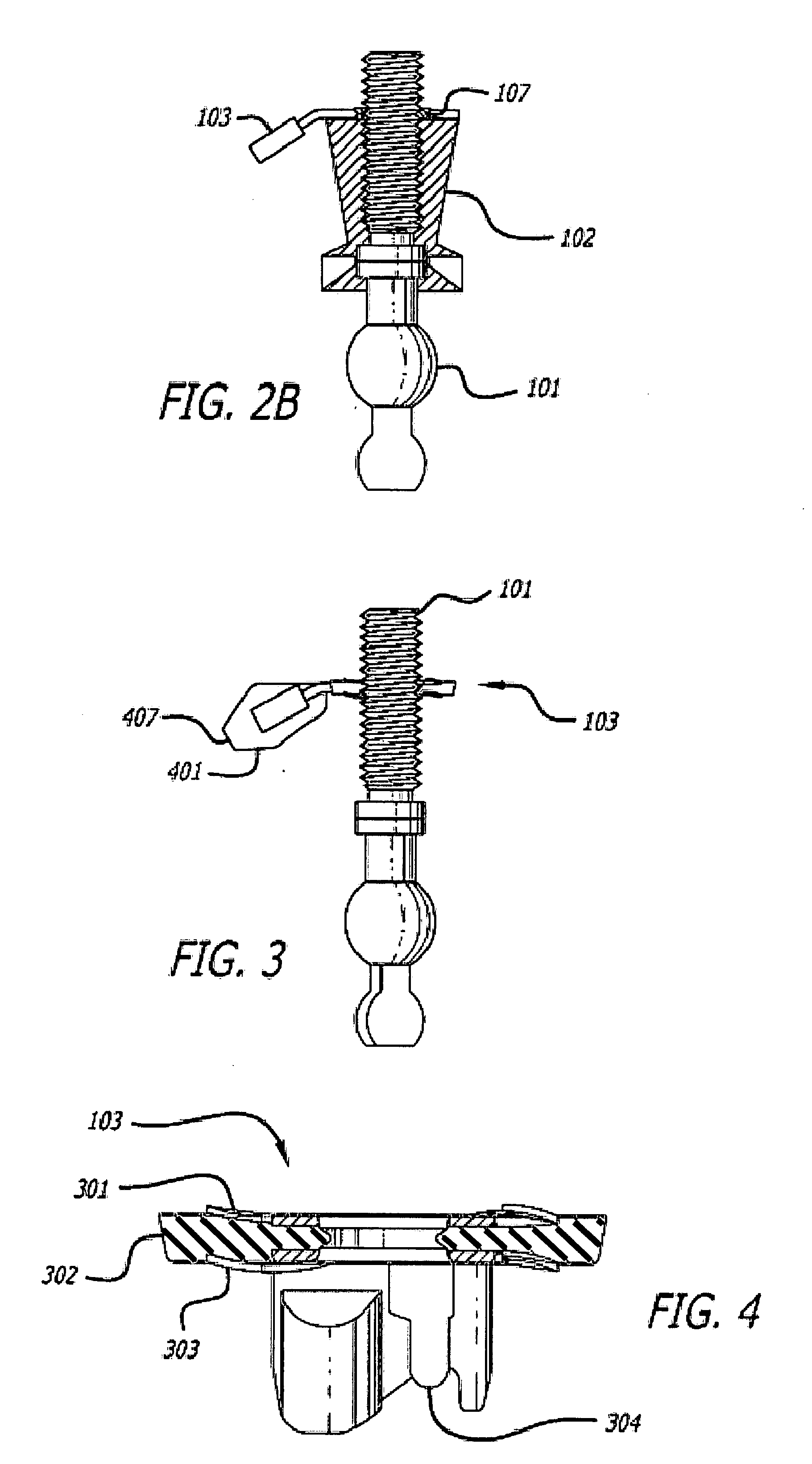Systems and methods for powered tap assemblies
a technology of power supply and power supply, applied in the direction of electrical equipment, coupling contact members, connections, etc., can solve the problems of only being effective marketing tools, traditional decorative tap handles, and not providing electrical power, so as to maintain rotational independence, maintain integrity, and reduce the effect of breakage with consistent us
- Summary
- Abstract
- Description
- Claims
- Application Information
AI Technical Summary
Benefits of technology
Problems solved by technology
Method used
Image
Examples
Embodiment Construction
[0029]Existing tap handles as they are presently used in commercial establishments fail to capitalize on their full advertising potential by failing to effectively draw attention to the beverage with which they are associated. While this drawback was addressed in U.S. Pat. No. 6,932,638 (the '638 patent), which is fully incorporated by reference herein, the systems and methods described in the '638 patent had certain design features that could make their mounting and use more difficult than necessary in some circumstances. For example, due to a problematic wire entry position, those systems and methods had limited configurations. The previous mechanism for wire entry also often resulted in the wire fraying and breakage, thus crippling the functionality of the systems. Further, the '638 system was problematic in that it could not maintain the rotational independence of the wire entry point over a sustained period of time. The present invention addresses these drawbacks of previous ap...
PUM
 Login to View More
Login to View More Abstract
Description
Claims
Application Information
 Login to View More
Login to View More - R&D
- Intellectual Property
- Life Sciences
- Materials
- Tech Scout
- Unparalleled Data Quality
- Higher Quality Content
- 60% Fewer Hallucinations
Browse by: Latest US Patents, China's latest patents, Technical Efficacy Thesaurus, Application Domain, Technology Topic, Popular Technical Reports.
© 2025 PatSnap. All rights reserved.Legal|Privacy policy|Modern Slavery Act Transparency Statement|Sitemap|About US| Contact US: help@patsnap.com



